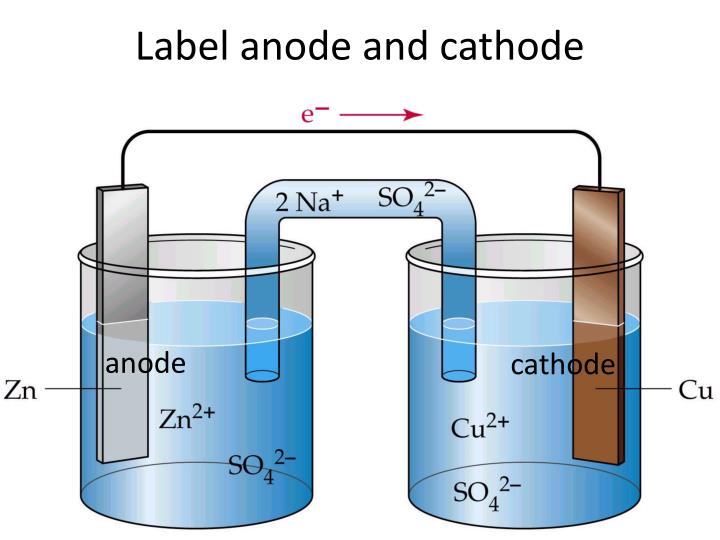

If it then lights the LED is hooked up correctly and is good. (Eine Ausnahme bilden Redoxreaktionen, bei welchen die Zuordnung umgekehrt ist. If the LED lights up it is hooked up correctly. So ist die Kathode die negative und die Anode die positive Elektrode. Under all circumstances anode and cathode are defined as follows: the cathode is where species are reduced. In this case the anode consists of crude copper and the cathode of thin sheets of. Increase the voltage until 10 ma or so flows. About 1 million tons of refined copper are produced each year by electrolysis.
CATHODE VS ANODE SERIES
A good way to test your LED's is to put one in series with a resistor. An electron acceptor is a cathode (negative charge). An anode (positive charge) is sometimes called an electron donor. The cathode is the electrode in the battery with the negative (-) terminal. The LED will be hooked up correctly if current is forced through the diode in what is usually the backwards direction for diodes. The anode is the electrode with the positive (+) terminal showing in the battery. You are in danger of shorting something if you hook up the LED backwards. How do you know that the flag points to the cathode with the kit LED's?This seems unusual to me. If the digits are multiplexed, and there are less than 78 digits, common cathode is better. However, there is absolutely no way to tell the difference between the anode and cathode by touch - they will both tingle if you touch both, and neither will tingle if you touch it alone. These definitions are true whether you have a electrolytic or galvanic cell. The anode of a lithium-ion battery has an active material.

While the cathode material in lithium-ion batteries is well optimized, the anode material can be enhanced and today's research is focused on this particular area. Anode: The electrode where oxidation occurs. The anode in a lithium-ion battery is a mixture of lithium and other metals.
CATHODE VS ANODE DRIVERS
7 (or 8 with decimal point) cathode drivers are needed per digit and one anode driver. For current to flow, you need to touch BOTH electrodes, thus closing the circuit through your body. Cathode: The electrode where reduction occurs. If the digits are not multiplexed, common cathode is better. Perhaps the leds are used and were cut out of a circuit. High-side (anode) drivers are more expensive, so the number of them has to be minimized. There are many facturing reasons why the flag is the cathode, There is no necessary reason why the short lead is the cathode. In the usual LED the flag AND the short led are connected to the cathode. Did I get the wrong rated LEDs? Am I in danger of shorting something? A picture has been posted at: " According to an experiment, electrolyte cells experience current flow from anode to cathode, and galvanic cells’ current flows from cathode to anode. In the others I bought, they point to the anode. The main difference between anode and cathode is that anode is a positively charged terminal while the cathode is a negatively charged terminal. In the kit's LEDs, the flag points to the cathode. An anode is an electrode by which the conventional current enters into a polarized electrical device.
CATHODE VS ANODE FULL
The effect of N/P ratio on electrochemical properties of lithium batteries can help to design the safe full cell without lithium plating."I noticed that inside the head of the LED, there is a triangular "flag" that points in one direction. the battery and retains the cathode and anode materials to be reconditioned. Among the cells with differently designed N/P ratios, significant difference was not observed in the aging test with fully charged batteries at 25 and 45 ☌. The meaning of ANODE is the electrode of an electrochemical cell at which. The cell with an N/P ratio higher than 1.10 effectively suppresses the lithium plating at the 0.85C-rate charging at 25 ☌ and the cell with 1.20 of N/P ratio shows the enhanced cycle performance in comparison with other cells. The N/P ratio is controlled by adjusting the anode thickness with a fixed anode density. In this study, the effect of N/P ratio (1.10, 1.20, and 1.30) on electrochemical properties has been investigated with a lithium polymer battery with PVdF-coated separator and 1.40 Ah of capacity. The areal capacity ratio of negative to positive electrodes (N/P ratio) is the most important factor to design the lithium ion batteries with high performance in the consideration of balanced electrochemical reactions.


 0 kommentar(er)
0 kommentar(er)
